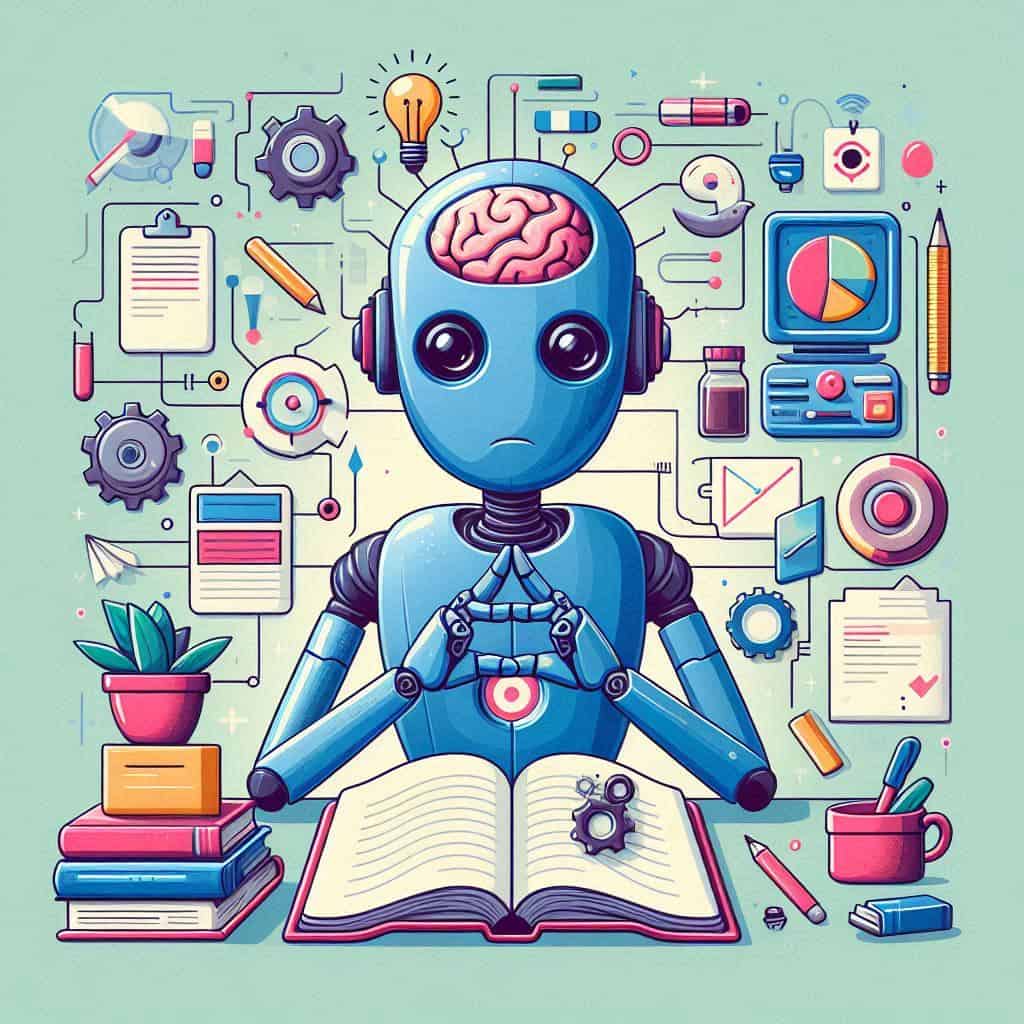
How to Edit AI Content: 9 Tips for Adding a Human Touch
- Editing & Refinement

You’re in the right place if you’re wondering, “How do I edit AI content?” It’s a skill we all need to develop as AI tools become more integrated into our lives! I get it—AI can be amazing for generating ideas and getting a first draft down quickly, but the output often needs refining before you can hit “publish.”
Think of AI as a super-fast assistant who gives you a rough sketch. Now, it’s your job as the editor to transform that sketch into a masterpiece.
Quick Tips for Editing AI Content
- Always fact-check: AI can make mistakes, so double-check everything against reliable sources.
- Infuse your brand’s personality: Make sure the tone and style align with your brand’s voice.
- Read for clarity: Break up long sentences, use transitions, and make the content easy to skim.
- Cut the fluff: AI loves to repeat itself, so trim the extra words and phrases.
- Add your expertise: Share your unique insights and experiences to make the content stand out.
Keep reading, and I’ll walk you through nine detailed tips to help you edit AI content like a pro and make it truly your own!
The Importance of Editing AI-Generated Content
The rise of artificial intelligence (AI) has revolutionized content creation. AI tools are now capable of generating written content in various forms, from blog posts and social media captions to full-fledged ebooks and articles. While AI can undoubtedly speed up the writing process and offer a helpful starting point, it’s crucial to remember AI-generated content isn’t a finished product. To truly shine and connect with your audience, AI content needs a human touch.
AI content editing involves reviewing, refining, and optimizing content created by AI tools to ensure it meets quality standards, aligns with your brand voice, and resonates with your target audience. It’s a critical step in leveraging AI’s capabilities responsibly and effectively.
Understanding AI-Generated Content
Before diving into the editing process, it’s helpful to grasp how AI generates content in the first place. AI writing tools utilize technologies like Natural Language Generation (NLG) and Large Language Models (LLMs) to analyze language patterns and produce human-like text based on the information they are trained on.
Advantages of AI for Content Creators
- Speed and Efficiency: AI can generate drafts and create content much faster than humans, saving significant time and effort.
- Cost Savings: AI tools can be a cost-effective alternative to hiring a full content team, especially for small businesses or individual creators.
- Overcoming Writer’s Block: AI can provide inspiration and help overcome writer’s block by generating ideas and content outlines.
Drawbacks of Relying Solely on AI
- Lack of Originality: AI often produces generic or formulaic content that may lack a unique perspective or voice.
- Factual Errors: AI can sometimes present outdated or inaccurate information due to limitations in its training data.
- Repetitive Phrasing: AI tends to repeat certain phrases or sentence structures, making the content sound robotic and less engaging.
- Lack of Human Insight: AI struggles to replicate the nuanced understanding, empathy, and personal experiences that humans bring to their writing.
9 Tips to Transform AI Content
To bridge the gap between AI-generated output and captivating content, follow these nine essential tips:
1. Fact-Check and Verify Accuracy
The most crucial step in editing AI content is ensuring accuracy. AI can make mistakes, especially when dealing with statistics, dates, technical details, or niche subject matter. Always double-check the information presented in AI-generated text against reliable sources. Consult subject-matter experts if needed, particularly for sensitive or specialized topics. Remember, your credibility depends on the accuracy of your content.
2. Refine Voice and Style to Match Your Brand
Your content should reflect your brand’s personality and resonate with your target audience. AI-generated content often lacks the distinctive tone and style that makes your brand unique. Take time to adjust word choice, sentence structure, and overall tone to align with your brand’s voice. Use evocative language, replace jargon with relatable terms, and ensure a consistent voice throughout your content.
3. Enhance Clarity and Readability for Effortless Consumption
Readers appreciate content that is clear, concise, and easy to understand. AI-generated text can sometimes be convoluted or lack a smooth flow. Break down long, complex sentences into shorter, more digestible chunks. Use transitional words and phrases to guide the reader through the logical progression of ideas. Employ bullet points or numbered lists to make information skimmable and digestible. Aim for one idea per paragraph and vary sentence structure to maintain reader interest. Ensure your content reads naturally and effortlessly.
4. Eliminate Repetitiveness and Fluff to Keep It Concise
AI frequently gets stuck in repetitive patterns, using the same phrases or sentence structures repeatedly. Edit carefully to remove redundancy and unnecessary fluff. Look for opportunities to combine sentences, replace overused words, and vary sentence openings to make the content more concise and engaging. Utilize proofreading tools to identify and address repetitive patterns that might slip past your eye.
5. Inject Your Expertise and Originality to Make It Unique
Don’t let AI content be generic and predictable. Share your unique insights, experiences, and knowledge to make it stand out. Back up your claims with original research, statistics, and real-life examples. Consider incorporating expert opinions, case studies, and anecdotal evidence to add depth and credibility. Your goal is to showcase your expertise and offer value that goes beyond what AI can produce on its own.
6. Optimize for Search Engines to Enhance Visibility (SEO)
If you want your content to be discoverable online, SEO optimization is crucial. While AI can sometimes help with basic SEO, human intervention is essential to ensure its effectiveness. Conduct keyword research to identify relevant terms your target audience is searching for. Integrate keywords naturally throughout the title, headings, subheadings, and body of the text. Craft compelling meta descriptions that entice clicks and accurately represent the content. Build internal and external links strategically to enhance website structure and authority. Don’t stuff keywords unnaturally, as this can harm your search ranking and reader experience.
7. Humanize the Content to Connect with Your Audience
One of the biggest challenges with AI content is its lack of human connection. Inject personality, warmth, and relatability into your writing. Share personal anecdotes, relatable experiences, or even your opinions where appropriate. Use conversational language, ask engaging questions, and encourage reader interaction. Remember, you’re writing for humans, so make your content feel like it comes from a real person.
8. Utilize AI Editing Tools as Your Sidekick
Take advantage of AI-powered editing tools like Grammarly, ProWritingAid, and Hemingway Editor to enhance your editing process. These tools can help you identify and correct grammar, spelling, style, and readability issues, saving you time and effort. However, don’t rely solely on these tools. Always review and apply your judgment to ensure the suggested changes align with your intended voice and style.
9. Maintain Ethical Standards for Responsible Content Creation
Transparency is key when using AI for content creation. Be upfront with your audience about your use of AI tools and explain how they contributed to the final product. Ensure that your content is original, avoids plagiarism, and is free from harmful or misleading information. Respect copyright laws and ethical guidelines when using AI-generated output. Strive to use AI responsibly and ethically to maintain trust with your audience.
Putting It All Together: Before & After
Let’s look at an example of how these tips can transform AI-generated content:
AI-Generated Text:
“One of the primary benefits of social media marketing is the ability to reach a vast audience with targeted messaging. Social media platforms provide sophisticated tools for pinpointing specific demographics based on interests, location, and online behavior.”
Edited Text:
“Social media marketing gives you a unique advantage: you can laser-target your ideal customers. Want to reach women in their 30s who love yoga and live in Seattle? Social media lets you do exactly that, so your messages land on the right screens.”
Improvements Demonstrated:
- Conversational Tone: The language is more engaging and relatable, like a friend offering advice.
- Specificity: Replacing “vast audience” with a specific example makes the benefit more tangible.
- Brevity: Unnecessary phrases are removed for better flow
Share:


